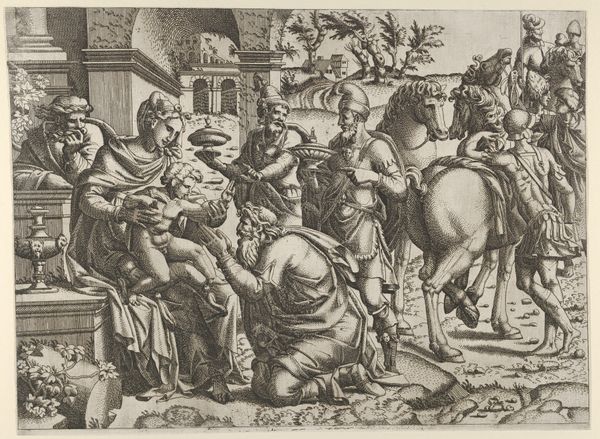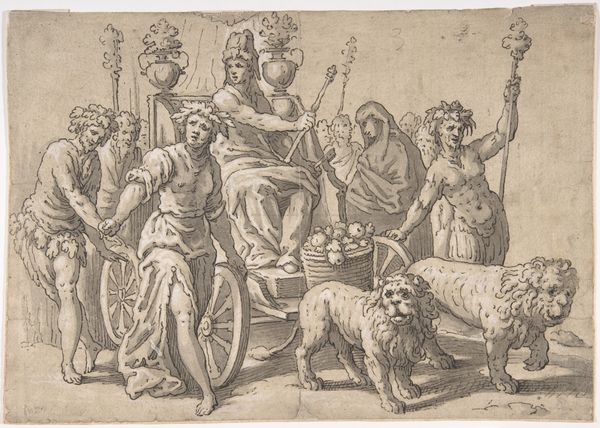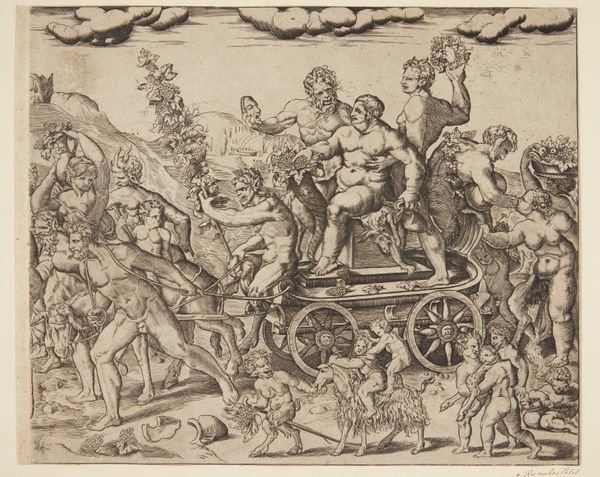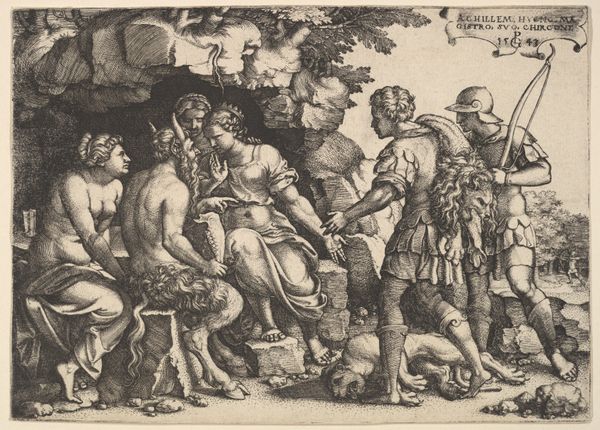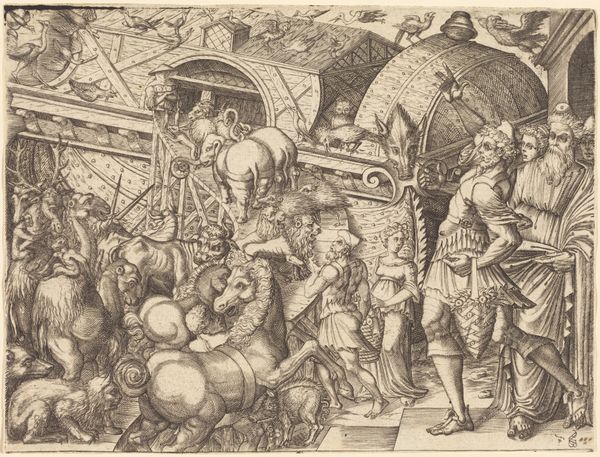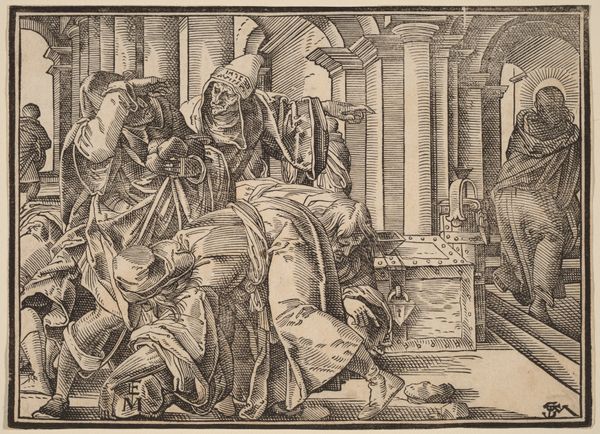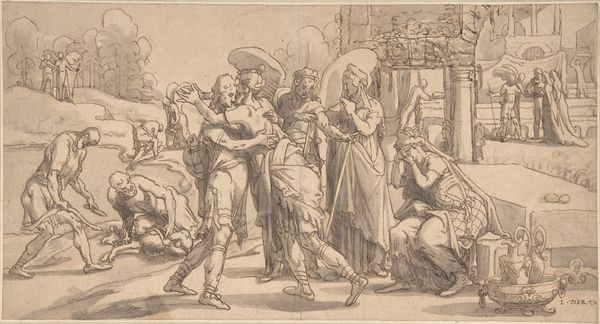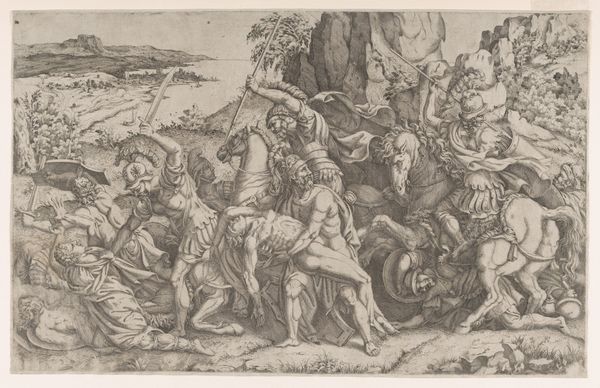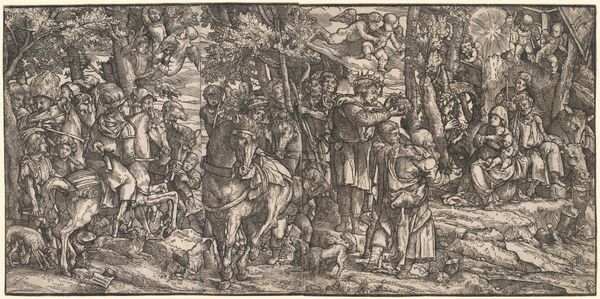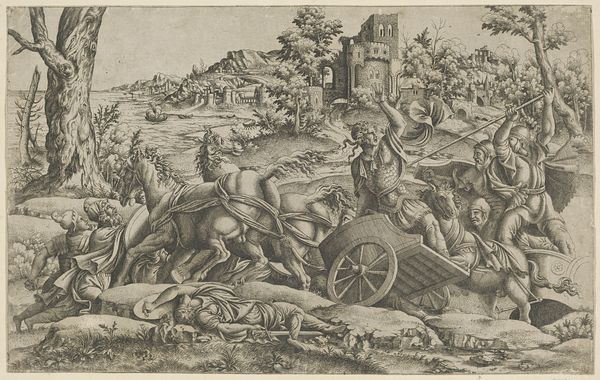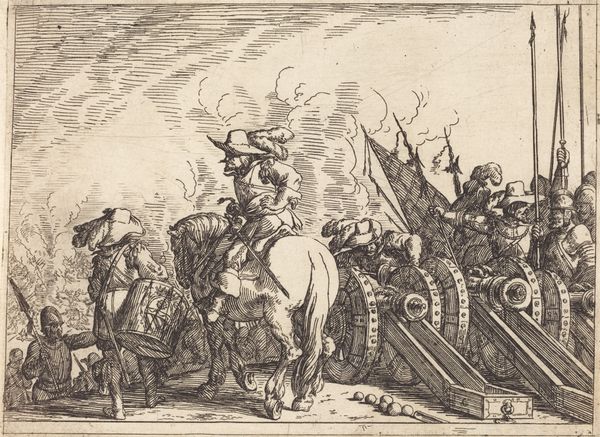
Christ Tells His Disciples of the Last Judgment Possibly 1630
0:00
0:00
drawing, print, ink, engraving
#
drawing
#
pen drawing
# print
#
11_renaissance
#
ink
#
history-painting
#
engraving
Dimensions: sheet: 10.7 x 14.8 cm (4 3/16 x 5 13/16 in.)
Copyright: National Gallery of Art: CC0 1.0
Curator: Oh, my. The overall impression is undeniably grand. Like a stage set for some profound, slightly theatrical declaration. The artist really committed to every etched line. Editor: Indeed! This is a work possibly dating back to 1630, an engraving by Christoph Murer titled, “Christ Tells His Disciples of the Last Judgement.” What you're responding to, I believe, is that the artist sought to express not just a literal biblical interpretation, but to give us a psychological landscape, through symbol and imagery. Curator: Exactly! A landscape! Because at first, I thought I was just looking at a chariot and horses, but now I realize this chariot is part of a procession towards the “last judgment,” the artist uses landscape, with city and mountainous outcrops, in the background to show that it will engulf all things. And the wheel...is that a lion’s head on the hub? It has all the force of revelation, I'd imagine! It's quite arresting, this mixture of divine decree and real anxiety. Editor: The lion could certainly be viewed in multiple ways—it may even serve as an allusion to judgment's solemn ferocity, traditionally linked with Christ. Furthermore, notice how Murer meticulously renders robes, turbans, and horse tack. This isn’t mere adornment. Such care conveys not only rank but responsibility. The weighty garments of the powerful often disguise and represent a complex burden: a sort of codified, wearable morality, so to speak. Curator: It is wearable! All I feel is the weight. It all creates an impression of an impending inevitability, almost like a cosmic doom encroaching. Even though its Christian iconography feels specific to a particular place and time, the feeling of being judged—scrutinized—transcends. Editor: I think it would be tough to argue otherwise! There's something about the universality of those archetypes he uses, even amidst such highly wrought detail. Curator: Well said! Editor: A final thought: What a striking intersection between individual moral responsibility and broader cultural narratives represented. The print beckons consideration beyond period dogma and reaches into more universal territories.
Comments
No comments
Be the first to comment and join the conversation on the ultimate creative platform.
